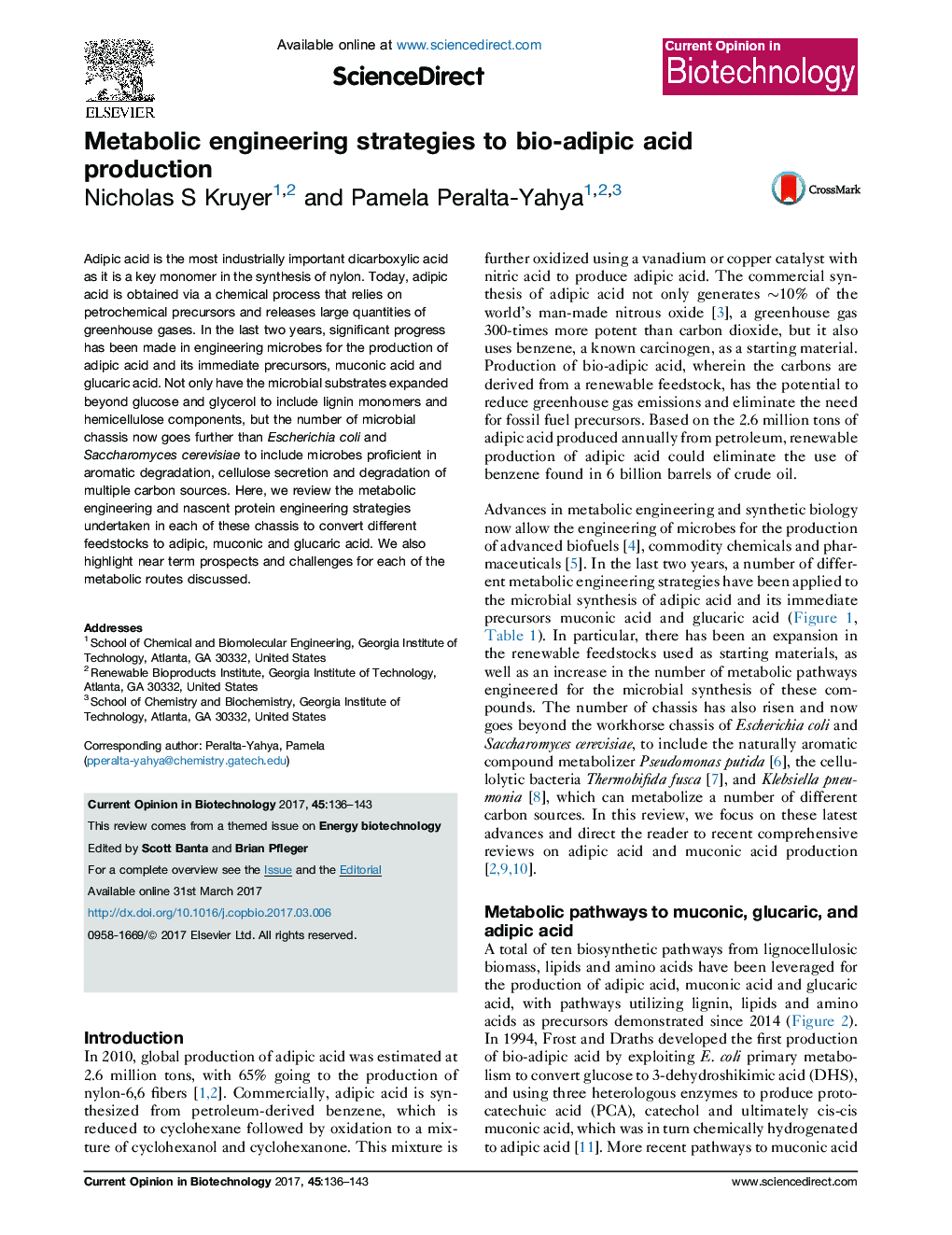| Article ID | Journal | Published Year | Pages | File Type |
|---|---|---|---|---|
| 6451660 | Current Opinion in Biotechnology | 2017 | 8 Pages |
â¢Adipic acid is a key monomer in the production of nylon-6,6 fibers.â¢Engineered microbes can synthesize adipic acid, muconic and glucaric acid.â¢The microbial chassis have been expanded beyond E. coli and S. cerevisiae.â¢Substrates now include lignin monomers and hemicellulose components.
Adipic acid is the most industrially important dicarboxylic acid as it is a key monomer in the synthesis of nylon. Today, adipic acid is obtained via a chemical process that relies on petrochemical precursors and releases large quantities of greenhouse gases. In the last two years, significant progress has been made in engineering microbes for the production of adipic acid and its immediate precursors, muconic acid and glucaric acid. Not only have the microbial substrates expanded beyond glucose and glycerol to include lignin monomers and hemicellulose components, but the number of microbial chassis now goes further than Escherichia coli and Saccharomyces cerevisiae to include microbes proficient in aromatic degradation, cellulose secretion and degradation of multiple carbon sources. Here, we review the metabolic engineering and nascent protein engineering strategies undertaken in each of these chassis to convert different feedstocks to adipic, muconic and glucaric acid. We also highlight near term prospects and challenges for each of the metabolic routes discussed.
